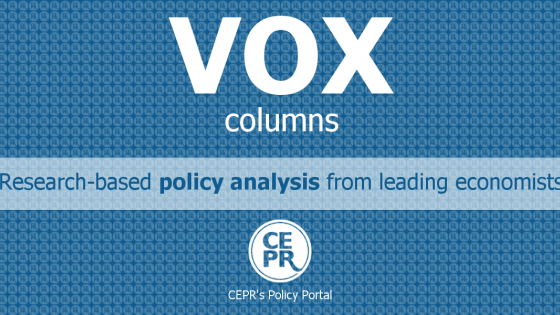Market power is underemphasised in the economic analysis of developing countries. In particular, concerning employment, the default model is one of the competitive labour markets. But this assumption matters for analysis and policy. And there is growing evidence that the competitive assumption is not valid.
The idea that employers can have market power over workers is not new in economics. In Book 1, Chapter 8 of the Wealth of Nations, Adam Smith highlights such power and the effect it has on wages:
“The masters, being fewer in number, can combine much more easily... Masters are always and everywhere in a sort of tacit, but constant and uniform combination, not to raise the wages of labour above their actual rate.”
Economic theorising about employer power took a giant leap forward with Joan Robinson’s classic The Economics of Imperfect Competition (Robinson 1932). She famously coined the term ‘monopsony’ for the case of a labour market with a single employer and developed the formula linking the elasticity of labour supply to the wage markdown when compared to the competitive equilibrium.
Adam Smith also notes that “the law, besides, authorises, or at least does not prohibit their combinations, while it prohibits those of the workmen.” In the history of developing countries, the draconian laws which increased employer power over Indian indentured labour in Mauritius, South Africa, Fiji, West Indies and Ceylon are well recorded by Hugh Tinker (1974). Within India, the state notoriously supported European indigo plantation owners against the poor workers and sharecroppers, leading to Mahtama Gandhi’s first major agitation, the Champaran Satyagraha, in April 1917 (Remesh 2006).
With this background, the literature on labour markets and employer power in developing countries seems to have developed in two directions. One direction continued the focus on the power of landlords as employers, through mainly micro-level studies in rural areas (e.g. Beteille 1974 and Bardhan 1987). The second strand is remarkable for being somewhat separate from, and seemingly uniformed by, the above literature. This strand is exemplified by Harris and Todaro’s (1970) paper, “Migration, Unemployment and Development: A Two-Sector Analysis”, which was chosen as one of the top 20 articles published in the American Economic Review for its centenary edition in 2011. Here, famously, firms are price and wage takers, and power in the formal sector labour market actually lies with workers through unions or government-imposed minimum wages! This strand leads naturally to a policy stance of deregulation of labour markets.
There is now significant literature on monopsony power in developed countries (e.g. Card and Krueger 1994, Dube et al. 2019, Abel et al. 2019, Ashenfelter et al. 2021, Manning 2021, Bachmann et al. 2022). Our recent work reviews the evidence on employer power in developing countries (Chau et al. 2022). The basic theory, as developed by Robinson (1932), says that the wage markdown in monopsony relative to a competitive labour market is inversely related to the elasticity of labour supply. For developing countries, a variety of methodologies have been used to estimate labour supply elasticities. Amodio and De Roux (2021) exploit pre-determined variation across plants in sales export destinations combined with exchange rate variation to generate plant-specific shocks in Colombian manufacturing. Following this approach, they demonstrate the presence of monopsony and estimate a firm-level labour supply elasticity of around 2.5. Dal Bo et al. (2013) randomised wages through a public program in Mexico called the Regional Development Program (RDP). Different salaries were announced randomly across recruitment sites, with the following job offers also subsequently randomised. Experimental estimates of labour supply elasticity were measured to be around 2.15. Brummund (2011) uses the production function approach to compute labour supply elasticities in Indonesian manufacturing plants and finds that over half of the manufacturing establishments have a significant amount of market power, with the median firm facing a labour supply elasticity of 0.52.
Studies have also tested the presence and extent of monopsony power using indirect means without necessarily measuring labour supply elasticity. In developing country contexts, Naidu et al. (2016) exploited the relaxation of visa restrictions of migrant worker movements across employers in the United Arab Emirates (UAE). The results indicate that firms paid workers 51% of the marginal product before the reform but paid workers 72% after. Brooks et al. (2021) find that building transportation infrastructure, specifically the Golden Quadrilateral highway in India, disrupted local monopsony power. Labour markdowns reduced among firms near newly constructed highways relative to firms that remain far from highways. Using firm-level data and variations in tariff reductions across industries in China, Kondo et al. (2021) find that input tariff liberalisation is associated with lower labour markdowns across firms.
If labour markets are monopsonistic, then, contrary to textbook theory, a minimum wage does not adversely affect employment and, in some conditions, can improve employment outcomes (Stigler 1946). In developing countries, null employment effects were observed by Hohberg and Lay (2015) in the case of Indonesia and El-Hamidi and Terrell (2002) in the case of Costa Rica across both formal and informal workers. No adverse employment effects were observed in South Africa, except in the case of agriculture (see Dinkleman and Ranchhod 2012 for domestic workers, and Bhorat et al. 2013 for a variety of sectors). The effect of minimum wage on construction workers in India suggests evidence in favour of monopsonistic labour markets (Soundararajan 2019). The meta-study for sub-Saharan Africa by Bhorat et al. (2017) suggests that the minimum wage has either benign or only slightly negative employment effects taken together across many settings. Broecke et al. (2017) review evidence on minimum wage effects in 14 major emerging economies (Argentina, Brazil, Chile, China, Colombia, India, Indonesia, Mexico, Poland, the Philippines, the Russian Federation, South Africa, Thailand and Turkey), and find a minimal impact on employment.
What if employers have market power in labour markets in developing countries? The case against regulation, and the case for intervention, then need to be rethought. Specifically for the minimum wage, employer power justifies its use as a device to increase efficiency and equity. The argument now turns to the context and detail of the labour market structure and the level and structure of minimum wages. Nothing said so far precludes a critique of actual minimum wages as set – they may be too high or not well structured – but a blanket negation of this policy instrument is no longer warranted (Bhorat et al. 2021).
This still leaves open the question of implementation of interventions when state enforcement capacity is weak, as it is generally recognised to be in developing countries. The intensity of enforcement is a key factor in determining the efficacy of a minimum wage in delivering its efficiency and equity gains (Basu et al. 2010). Thus while the competitive labour markets presumption is too simple and empirically invalid, so is the presumption of easily implemented policy correctives to employer power in labour markets. The difficulty of enforcing minimum wages is but one example. More generally, there is no easy transference of an ‘anti-trust’ frame, which is very well developed for product markets in developed countries to labour markets in developing countries. Defining the boundaries of a labour market with the prevalence of informality, and then identifying measures and limits to concentration in the way it is done in conventional anti-trust regulation for product markets in developed countries, will be extremely difficult in developing countries.
If directly addressing employer power in developing country labour markets can only be a partial answer, is there an alternative, or a supplement? We get a clue from the basic wage markdown formula: the lower the elasticity, the greater the markdown. In simple terms, the more workers are bound to supply labour no matter what the wage, the greater the power employers have over them. Thus raising the elasticity lowers the markdown. What might such interventions look like? As developed in Basu et al. (2010), for example, transportation costs are a key determinant of the responsiveness of labour supply to changes in wages. And empirical evidence suggests that the development of transport infrastructure can lower the degree of employer power. But transportation is just a start. Other economic, social, cultural and institutional barriers to labour force participation can have the same effect and prompt us to investigate these features of developing countries more closely as underpinnings of employer power.
In sum, employer power is a feature of labour markets in developing countries. Taking this on board changes our policy perspective significantly on labour market interventions, and it opens up interesting and important areas of empirical and theoretical research.
References
Abel, W, S Tenreyro and G Thwaites (2019), “Monopsony in the UK”, VoxEU.org, 23 Jan.
Amodio, F, and N De Roux (2021), “Labor Market Power in Developing Countries: Evidence from Colombian Plants”, IZA Discussion Paper 14390.
Ashenfelter, O, D Card, H S Farber and M Ransom (2021), “Monopsony in the labor market: New empirical results and new public policies”, Princeton University Industrial Relations Section Working Paper No 652.
Bachmann, R, C Bayer, H Stuber and F Wellschmied (2022), “Monopsony makes firms not only small but also unproductive: Why East Germany has not converged”, VoxEU.org, 23 May.
Bardhan, P K (1984), Land, Labour and Poverty: Essays in Development Economics, Oxford University Press.
Basu, A K, N H Chau and R Kanbur (2010), “Turning a blind eye: Costly enforcement, credible commitment and minimum wage laws”, The Economic Journal 120(543): 244–269.
Beteille, A (1974), Studies in Agrarian Structure, Oxford University Press.
Bhorat, H, R Kanbur and N Mayet (2013), “The impact of sectoral minimum wage laws on employment, wages, and hours of work in south africa”, IZA Journal of Labor & Development 2(1): 1–27.
Bhorat, H, R Kanbur and B Stanwix (2017), “Minimum wages in subsaharan africa: a primer”, The World Bank Research Observer 32(1): 21–74.
Bhorat, H, R Kanbur and B Stanwix (2021), “An Empirical Assessment of the National Minimum Wage in South Africa” (with H Bhorat and B Stanwix), in N Bohler-Muller, V Reddy and C Soudien (eds), Ethics, Politics, Inequality: New Directions, pp 154-172, HSRC Press.
Broecke, S, A Forti and M Vandeweyer (2017), “The effect of minimum wages on employment in emerging economies: a survey and meta-analysis”, Oxford Development Studies 45(3): 366–391.
Brooks, W J, J P Kaboski, I O Kondo, Y A Li and W Qian (2021) “Infrastructure investment and labor monopsony power”, IMF Economic Review 69(3): 470–504.
Brummund, P (2011), “Variation in monopsonistic behavior across establishments: Evidence from the indonesian labor market”, Job Market Paper.
Card, D and A B Krueger (1994), “Minimum Wages and Employment: A Case Study of the New Jersey and Pennsylvania Fast Food Industries”, American Economic Review 84(4): 772–793.
Chau, N, R Kanbur and V Soundararajan (2022), “Employer Power and Employment in Developing Countries”, CEPR Discussion Paper 17548.
Dal B´o, E, F Finan and M A Rossi (2013), “Strengthening state capabilities: The role of financial incentives in the call to public service”, The Quarterly Journal of Economics 128(3): 1169–1218.
Dinkelman, T and V Ranchhod (2012), “Evidence on the impact of minimum wage laws in an informal sector: Domestic workers in south”, Africa Journal of Development Economics 99(1): 27–45.
Dube, A, J Jacobs, S Naidu and S Suri (2018), “Monopsony in online labour markets”, VoxEU.org, 21 May.
El Hamidi, F, and K Terrell (2002) “The Impact of Minimum Wages on Wage Inequality and Employment in the Formal and Informal Sector in Costa Rica”, in R B Freeman (ed), Inequality around the World New York, Springer.
Harris, J R, and M P Todaro (1970), “Migration, Unemployment and Development: A Two-Sector Analysis”, American Economic Review 60(1): 126–142.
Hohberg, M and J Lay (2015), “The impact of minimum wages on informal and formal labor market outcomes: evidence from Indonesia”, IZA Journal of labor & Development 4(1): 1–25.
Kondo, I and Y A Li and W Qian (2022), “Trade Liberalization and Labor Monopsony: Evidence from Chinese Firms”, Available at SSRN.
Manning, A (2021), “Monopsony in Labor Markets: A Review”, ILR Review 74(1): 3–26.
Naidu, S, Y Nyarko and S-Y Wang (2016), “Monopsony power in migrant labor markets: evidence from the united arab emirates”, Journal of Political Economy 124(6): 1735–1792.
Remesh, B P (2006), “Champaran Satyagraha for Indigo Workers: A Memorable April in the Mahatma’s Diary”, Labour File 4(2).
Robinson, J (1932), The Economics of Imperfect Competition, MacMillan.
Smith, A (1776), An Inquiry into the Nature and Causes of the Wealth of Nations.
Soundararajan, V (2019), “Heterogeneous effects of imperfectly enforced minimum wages in low-wage labor markets”, Journal of Development Economics 140: 355–374.
Stigler, G J (1946), “The economics of minimum wage legislation”, The American Economic Review 36(3): 358–365.
Tinker, H (1974), A New System of Slavery: The Export of Indian Labour Overseas, 1830-1920, Oxford University Press.






